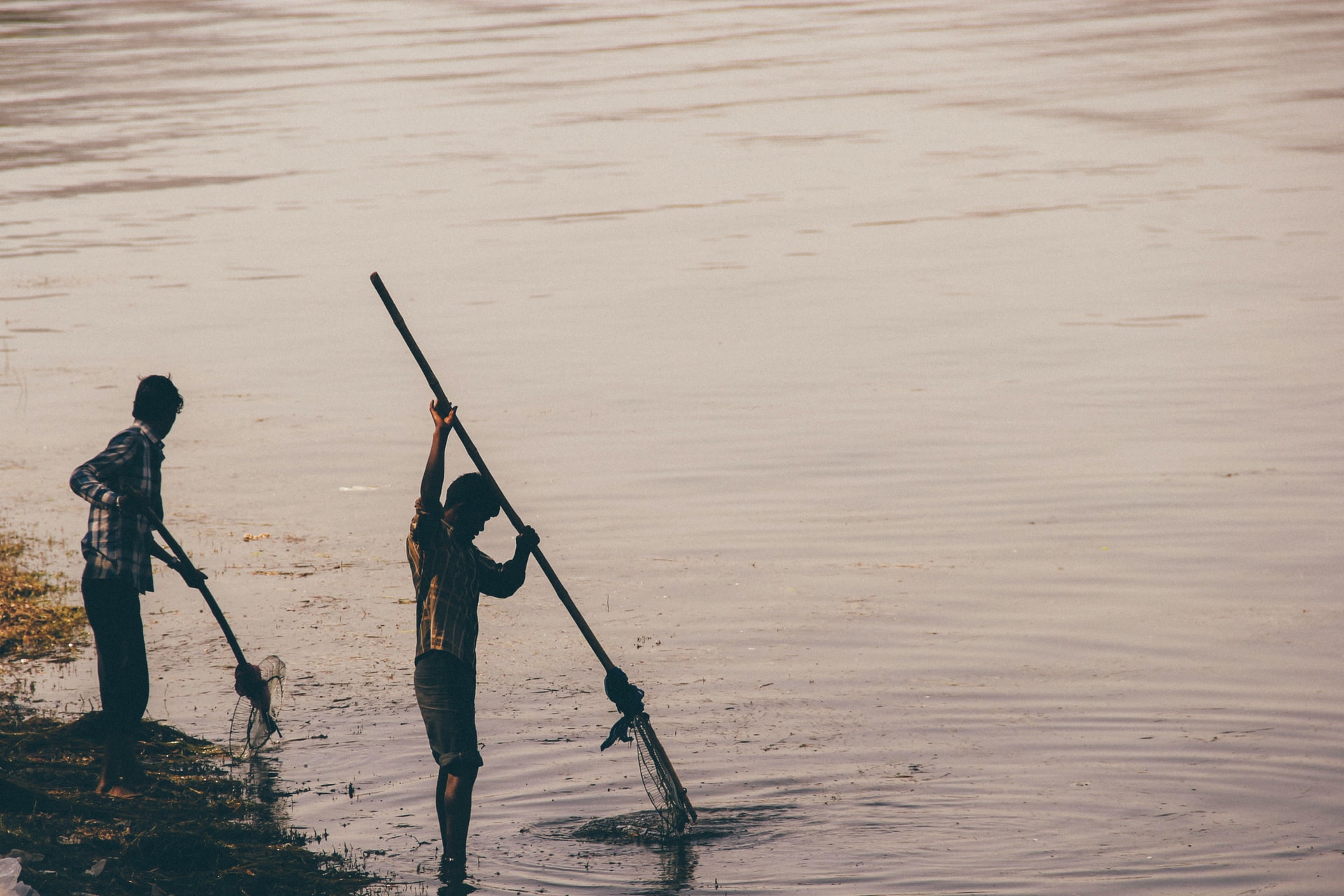…set the boat loose, pick up the alms,
the time of low tides are running out
set the boat loose
the clouds are gathering, the wind is making a strange noise,
let’s tie our boats here
I’m in a hurry to reach the end of the eternal river…
Bon Bibi woke up to the routine. She stretched and yawned. Adjusting her crinkled pink sari and draping it tighter around her waist, she untied her long hair, releasing the tresses to crawl down like long black pythons. Bon Bibi glanced over to the crown she’d set aside the previous night as the chants kept progressing in harmonic symphony. That’s Ali and Aniruddha singing today; she recognized the voices. The boys share a magical unity, Bon Bibi thought. She pulled herself up and glanced over to her sleeping brother, Shah Jongoli. He usually woke up to the second round of chants. She let him rest. Bon Bibi wondered what that day had for her; who was to be saved. Would a little boy like Dukhey run into the forest again today? Or would a tiger give her a hard time? Either way, she knew that day was going to be a busy one.
The prayers the devotees were chanting were followed by the familiar chorus, ‘Allah Allah Bol’ (Say the name of Allah). The waves played music to the chants. Familiar. Routine. Bon Bibi was ready to don the wait of all the prayers again. With a little bit of fatigue and habitual determination, she moved over to the throne and smiled at her devotees. Familiar. I am their mother, she thought. Motherhood is routine. It is astonishing how one never grows tired of it.
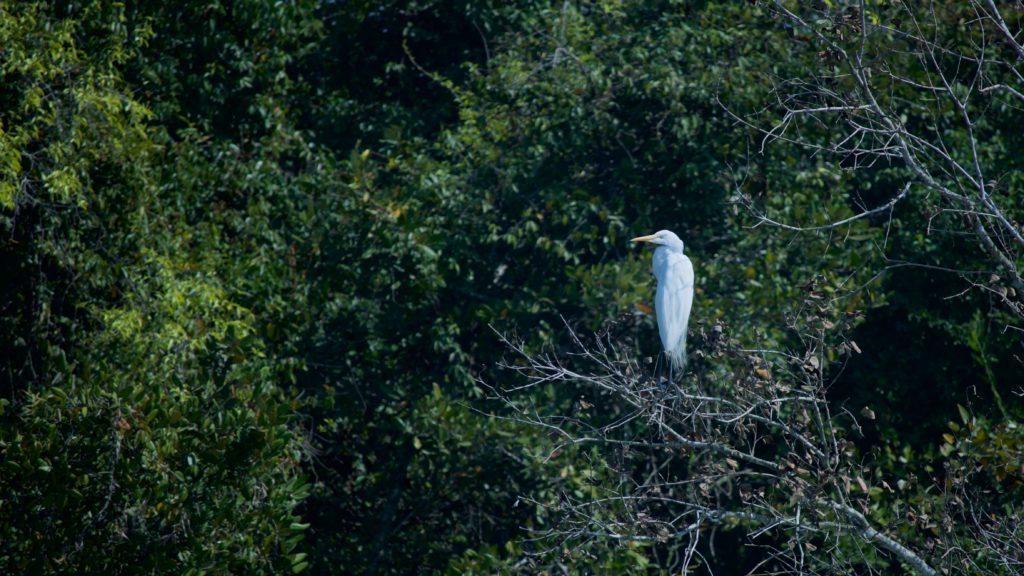
The legend of Bon Bibi is beyond sacred for the inhabitants of the Sundarbans forests. According to the indigenous Bangla texts or Johuranama, Bon Bibi is believed to hail from Medina. Her father, Fakir Ibrahim, became the king of this labyrinth of islands that spread over West Bengal and Bangladesh. Bon Bibi is the goddess of the aboriginal mosaic spanning two South Asian countries. She is jointly worshipped with her twin brother, Shah Jongoli. Not only are the literary and folk cultures of the two lands intricately intertwined with each other, but also are the national sentiments, demographic compositions, beliefs, vocations, and practices. Before the inhabitants enter the dark forests of Sundarbans every day to collect honey, catch crabs and fish, they pray to Goddess Bon Bibi to protect them from tiger attacks. For the Hindus and Muslims residing in this landscape, the ‘religion of the forest’ is the coherent force that pulls them together in a miraculous equilibrium when their neighboring territories agitate over communal unrest.
Waves of Angst: The Sundarbans
A maze of two hundred islands, knotted together by a whopping 140,000 ha of mangrove forests, the Sundarbans is at the point of convergence of the Ganges, the Brahmaputra, and the Meghna rivers in the Bay of Bengal. These beautiful wetlands expand across the Hooghly River in West Bengal to the Baleswar River in Bangladesh. The dense mangrove canopies of Sundarbans prevent soil erosion and act as shock absorbers. The coastal natives make a living from these forests. The ‘forest workers’ form the laborer class of the hierarchy in the Sundarbans. They are either honey collectors or wood collectors. They, of course, directly depend on the forests for survival. Similar is the case of forest fishers since they depend on the rivers and are often at the mercy of the estuarine crocodiles. The laborer class, therefore, submits their entire faith over nature and expects to be under the protective gaze of Bon Bibi. With the growth in shrimp cultivation in the Sundarbans, the islands metamorphosed into a more commercial realm. Such market-based vocations were largely based on fluctuating prices and demand. This shift marked a significant change in the economical paradigm of the islands. However, it did not come without a price.
‘Sundarbans’ translate to ‘beautiful forests’ in the Bengali language. This could only be deciphered as an understatement that does not completely inculcate the magnificence of these wetlands. It is the world’s largest mangrove repository. However, it isn’t simply the natural composition that makes the Sundarbans unique. The lands are an amalgam of organic humanity and wilderness. Man and wild unite in these marshy swamps to constitute a paradigm so rare in the 21st century that it is nothing short of spellbinding. Four wildlife sanctuaries of the Sundarbans have been recorded as part of the UNESCO World Heritage Sites as they are home to around 453 faunal wildlife varieties and 334 saltwater tolerant plant species. The Bengal tigers, Indian pythons, and estuarine crocodiles are unique dwellers of this haven. A complex web of tidal waterways and wetlands makes this landscape an intricate one. The Sundarbans are simultaneously the protector and destructor of its inhabitants. While it provides the inhabitants a means to make a livelihood, the risky topography of the islands is fatally scary and unpredictable. High tides and cyclones are routines to the Sundarbans. There is no guarantee that the breadwinner of a house would return home after a day’s labor. That he/she may have made a meal to the tigers or been swept off by a wave are highly probable occurrences. The aggressively vivacious terrain was entered into the 2020 IUCN Red List of Ecosystems as an endangered one. As is familiar to the contemporary conundrum of climate change and global warming, the Sundarbans are under severe threat of extinction. The story runs back to decades of indigenous dislocation, capitalist penetration, and ecological degradation.
The Land that Dies a Little Every Year
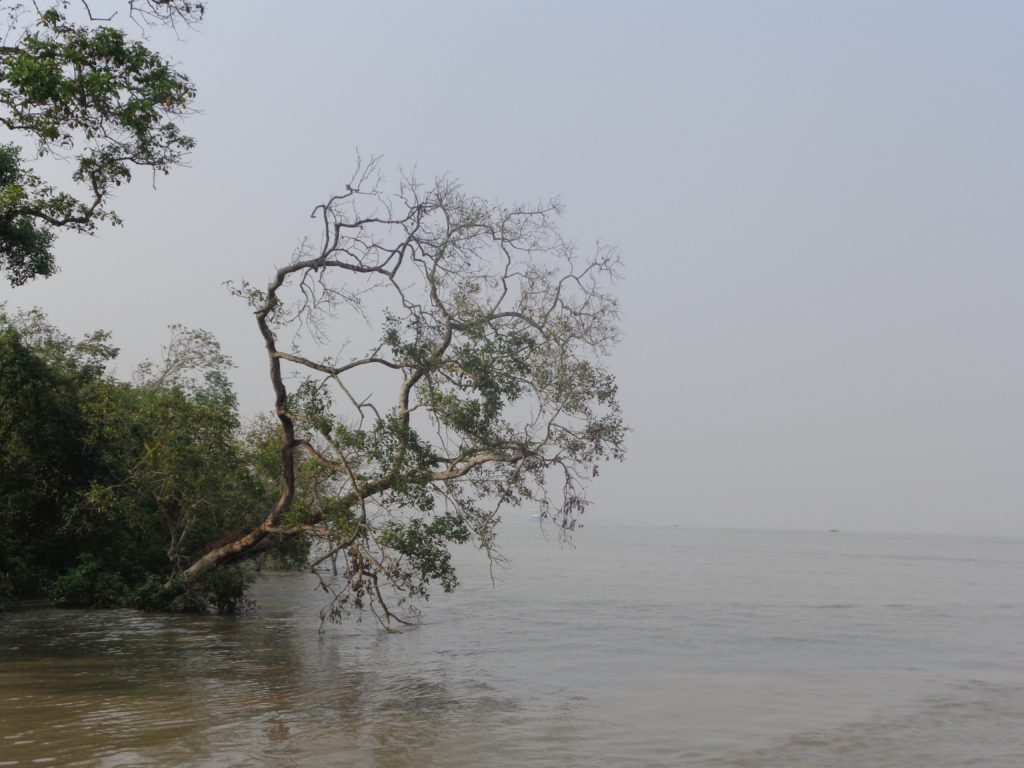
In order to make room for the settlements, the mangrove forests of the islands were cleared. This has been recurrent since the 1800s. Small agricultural activities required the land to be cleared. With the advent of commercialized production, especially business-centered vocations like shrimp cultivation, the clearing of the mangroves and its environmental impacts skyrocketed. This has led to the downfall of fish varieties and population in the backwaters of the islands. Climate change clearly has a direct influence on this depletion. The water bodies are faced with an increase in salinity due to the recurrent oil and coal spills. Natural calamities and turbulent waves are a constant threat to these forests and their inhabitants; both animals and humans. Climate change also contributes to intensifying the gravity and impact of the cyclones in the Indo-Gangetic delta. An abode to the magnificent Royal Bengal Tigers, these wetlands marked minor progress in tiger population in the past few years due to hectic preservation undertakings. Inconsistent temperatures, unprecedented cyclones, tidal amplitude fluctuations, and deforestation are other activators of ecological risks. Each year, the Sundarbans slip a little deeper into the water, slowly disappearing into oblivion. Due to high tides, nearly 70% of these islands ritualistically submerge under saline water. This does not wait for a season to occur.
The biggest blow that hit the Sundarbans would have to be the construction of the 1320 megawatt coal-powered Rampal Power Station in Bangladesh, which began in 2016. It is being built over an area of 1834 acres of land, barely 14 kilometers to the north of the islands. Over one of the world’s most sacred ecosystems, stands erect the country’s largest power plant. As of July 2021, the construction has been delayed and its completion is expected by June 2022. The Environmental Impact Assessment or EIA of the physical, social, biological, and economic landscape of this ecosystem concludes that the impacts this power plant could have over it are catastrophic and irreversible. Multitudes of studies are scrutinizing the benefits and authenticity of this man-made disaster. None of their results have been reassuring. According to the study conducted by Abdullah Harun Chowdhury of Khulna University, Bangladesh, the power plant was concluded to cause health hazards, river erosion, noise pollution, and agricultural destruction. He also notes how there would be an increase in the water logging conditions of the terrain as well as significant losses of culture fisheries.
The evident surge in oil spills, illegal forest clearances, and commercialized honey and fish exports have been hard on the Sundarbans. The increasing attention given to the ‘trade dynamics’ of the islands and its hike in commercial production in the laissez-faire convention harms the landscape’s biodiversity. Capitalist greed causes people to take more from the land than it can afford to offer. Agriculture is not a dependable vocation for the residents of the islands. There is no guarantee of the weather. The heavily saline water does little to help. Therefore, the inhabitants have resorted to shrimp cultivation since it deems to reap better revenue. However, the ecological composition of the Sundarbans is irreversibly affected due to shrimp cultivation. It develops erosion and increases the salinity in water. This, in turn, affects the mangrove trees as their roots get corroded. Other aquatic lives too are impacted due to the increase in shrimp populations. These isolated practices, combined with global warming and heavy carbon emissions lead to the increase in temperature, exposing the coastal populace of both human beings and animals, to unfathomable danger.
An Uncommon Communal Harmony

The islands of the Sundarbans are the only place on earth where both the Hindu and Muslim communities worship the same deity. Bon Bibi is the goddess of the forest. She conveniently metamorphoses from Bon Bibi to Bandurga or Bandevi for her Hindu followers. Perhaps the only source of solace to the inhabitants of the wetlands, Bon Bibi bears the weight of all of the Sundarbans’ expectations, answers to the prayers of its natives and those of its animals. Her Islamic ancestry is of little importance to her Hindu devotees, who claim to have witnessed her miracles unfold before their very eyes. She often saves them from tiger attacks and supplies them with the overabundance of resources during crises. For its natives, Bon Bibi is the Sundarbans.
When Bengal confronted the communal partition of 1947, the foundational harmony of its religious and cultural montage was intimidated. However, in spite of the separation of the Hindu-rich West Bengal and the Muslim abode East Bengal (modern-day Bangladesh), there ran a vein of overlapping beliefs and customs across these communities, transcending political borders and peripheries. The simultaneous development of Sufism and Buddhism in these regions also catered to the improvement of Hindu-Muslim unity in the Sundarbans. Beyond everything, a common fear tied these two communities together, prompting little regard for biases. The fear of the forests. The fear of the waters. The fear of the animals. Today, this has transitioned over to include a newfound fear: one of capitalist penetrations and enforced conservative endeavors. Therefore, the unanimity in the worship of Bon Bibi may be reasoned by a primeval justification. It all melts down to the angst to survive, somehow. This fear and fight for survival are rendered as too primitive to the ‘uber-developed’ modern mind and consumerist conscience.
In her study titled ‘Traditional Livelihoods and Survival Crisis: The Politics of Biodiversity Conservation in Sundarban, West Bengal’, Amrita Sen notes that there is a thin line separating the inhabitants of these islands from the tag of ‘indigenous’. The governments of West Bengal and Bangladesh recognize them as ‘non-indigenous’ since they were mostly migrants and refugees of adjacent terrains. They are descendants of neighboring states like Orissa, Bihar, and Jharkhand in India who had emigrated a few hundred years ago. However, there is an ironic and simultaneous romanticization of the lives, livelihoods, traditions, and practices of these inhabitants, alongside hegemonic interferences. These interferences are marked with simulated nostalgia which is very reminiscent of yesteryear imperial discourses.
The occupants of these forests resort to traditional vocations like fishing and honey collecting. Some of the families that live off of these jobs inherit the necessary skills from their forefathers while others learn from practice. Collectively, they are called ‘forest workers’. They jointly worship the same deity and set off to do the same profession. These workers are descendants from different parts of India, who finally settled down with one another in the Sundarbans. They practice and follow different religions, speak slightly different tongues, and hold on to different value systems. Amrita Sen rhetorically questions the authenticity of the term ‘indigenous’ at this juncture. How justifiable is it that the allocation of the indigenous status over a community depends more on ancestry than on common socio-economic and cultural paradigms? Refusing these communities the indigenous tag thrusts them back into refugee statuses.
Picking a Side before the Battle
The jungle, like the human body, provides a favoured context for a conceptualization of the relations between the outside and the inside, between wilderness and culture, and at an even deeper level, for dialectic between the pure and the impure.
Klaus Zimmermann (German Ecologist)
When Sonamoni of Jelepara, an island close to the Sundarbans, was married off to Charan Sardar, a fisherman, she was little aware of the catastrophe lurking behind the mangrove greens. A few years into the marriage, Charan was dragged off by the man-eating tigers of the Sundarbans one day when he ventured out to fish. His body was never recovered. Sonamoni became a widow at a tender age, disdained as the ill omen that befell Charan’s family. When his younger brother finally chose to marry her out of pity, Sonamoni thought things could take a brighter turn from thereon. But Bharan, Charan’s brother, too met with the same fate. Eventually, she was bequeathed with four other mouths to feed; her children from two marriages.
That being widowed in communities like these is condemnable is no surprise. It didn’t help that Sonamoni also belonged to a marginalized caste. She was thrown around her parents’ and in-laws’ homes. Now at sixty years of age, she lives alone in a battered shelter in Jelepara after having married off her daughters and sons. In the Satkhira Shyamnagar area of Jelepara, Sonamoni is one of the 350 ‘tiger widows’ who are subject to acute poverty and societal stigma. The government of Bangladesh had offered to extend financial aid to the families of tiger attack victims in 2011. Between 2011 and 2020, 46 people had died due to unprecedented tiger attacks, and 16 were wounded. According to a BBC report (2011) by Anbarasan Ethirajan, nearly 80 people are killed each year by tigers on the Bangladeshi side of the wetlands. The support said to be given by the government seldom reaches the families in need, as Masum Billah notes in his study for The Business Standard.
The ‘man-eating’ tigers of the Sundarbans aren’t afraid of the water bodies. The salinity in the waters of the area is speculated as one of the reasons for their man-eating propensities, according to Hubert Hendrichs, the German biologist. The ecologist Khasru Chowdhury disagrees with this observation, declaring the vegetation quantity to be the reason for these tendencies in tigers. The deficiency in the number of natural preys and other health ailments catalyzed by interferences in the ecosystem are other possible reasons for their repetitive attacks on humans. Confronting a tiger once in a while is not new to the dwellers of the Sundarbans. However, the fear cannot be disparaged as routine.
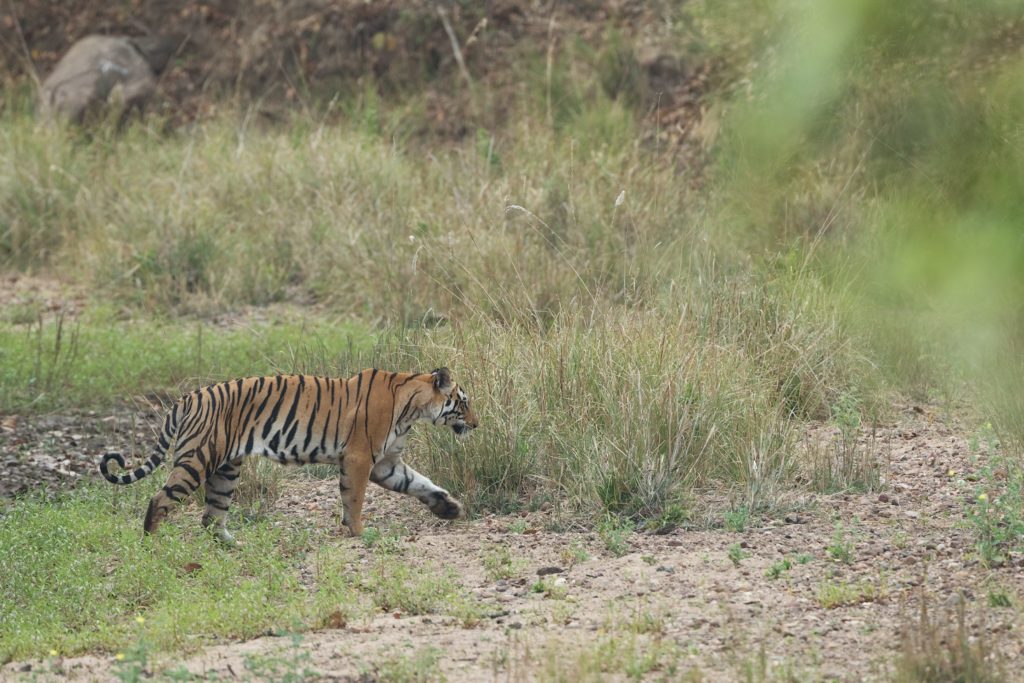
The local inhabitants of the forests believe that the tigers are as integral a part of the Sundarbans as they are. A substantially large area of land submerges due to high tides each year to never resurface. This squeezes the natives and animals together into a small province. The fishing and honey collecting activities of the humans have to coexist with the hunting practices of wild animals like the Bengal tigers and estuarine crocodiles. There have been a few instances where the locals have caught dangerous (but endangered) tigers in set traps to kill them. The Sundarbans thus transfigures into a survival game for all its occupants- the two-legged, the four-legged, and the no-legged.
Since there is a necessity to conserve the ecosystem and its natural inhabitants; the animals and the crustaceans, multiple conservative strategies have been introduced to positively handle human-wildlife conflict management. The World Wildlife Fund for Nature (India) activated the Project Tiger in 1973 in association with the Forest Department of the Sundarbans to protect the royal Bengal tigers of the region. Thereon, various nature clubs, NGOs, and activists have connected with the Sundarbans in preservation pursuits to reduce the dependence on forest resources by its natives. The WWF has immensely helped the people of the forests build up livelihoods that do not require them to plunge into the depths of the thick mangroves. However, as the land keeps on vanishing bit by bit into the waters, the very hearthstone of survival for all the different species of organisms in the Sundarbans has come to be very critical.
Preservation or Superfluous Penetration?
The hegemonic order of contemporary times has been doing a fool-proof job appropriating avante garde narratives, be it exotic ecosystems, unfamiliar cultures, or oriental art. There is much normalizing associated with the appropriation of cultures. In the phenomenal novel The Hungry Tide (2005) by Amitav Ghosh, he addresses the fundamental contradiction in the implementations of Western environmental conservation programs in yesteryear colonies to preserve these exotic locations’ grandeur and tourist incentives. In the haste to prevent ecological consequences and environmental depletion, Western conservation paradigms pawn the lives and livelihoods of human beings. It is also appalling to note that such environmental crises were instilled by colonial prowling and later, capitalist trade. There are disastrous impacts to the protectionist policies the Sundarbans are clustered with.
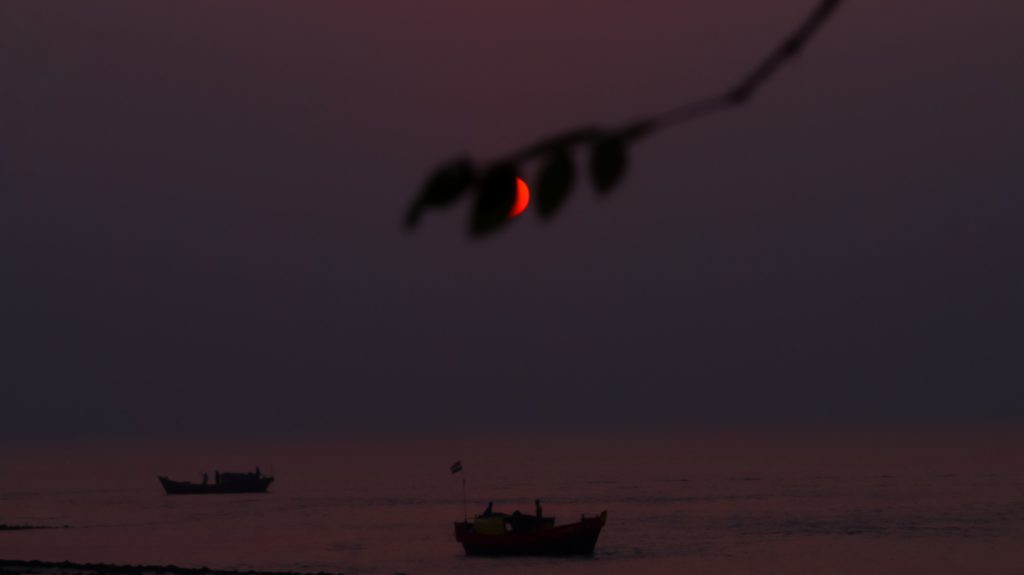
In order to be an ethically engaged cosmopolitan, one must be sensitive to particularities and local conditions. They must learn to identify with the other.
Terri Tomsky, Amitav Ghosh’s Anxious Witnessing and the Ethics of Action in ‘The Hungry Tide‘
The local inhabitants of these islands are directly affected as they are often expelled from their lands in order to secure them as tiger reserves. This is innately due to a westernized assurance about the knowledge of an ecosystem. There looms a sense of lethargy amidst conservationists to study different lands before designing policies for the protection of its inbred species of flora and fauna. Amitav Ghosh, via his novels that expansively discuss climatic repercussions, advocates that the understanding of a particular ecosystem cannot be belittled as a linear process. It shall encompass a comprehensive analysis of human history, past knowledge, and experiences. Empowerment of the subalterns does not suffice with the introduction of technology. Every region demands personalized care. The same method of preservation cannot be adaptable to all environments. Traveling past class and social discrimination is the only way to democratically empower the subaltern and the indigenous. This can simultaneously ensure the wellbeing of the ecosystem as well.
There is a hike in the global attention that the islands enjoy with the surge in the tourism industry. This has led to technological advancements and increased employment opportunities. However, there is little surveillance on the oil spills induced by the boats that transport tourists to and fro. With the improvement in tourism, the wetlands have also had to combat littering. The familiar foe, plastic waste, poses an immense threat to this habitat. In addition to these obvious factors, the Rampal Power Plant is all set to plunge the islands into utter doom with its completion. The power plant not only affects the ecological composure of the area but also dislocates thousands of land-owning families from their homes. For the record, these are not elite land owners who can afford to relocate. The IUCN had expressed serious concerns over the construction of this power plant in the Sundarbans. However, international organizations have little implementation power as opposed to the penetrative freedom enjoyed by consumerist schemes.
The Trialectics of Man, Animal & Nature

There are quite a number of discourses that debate the reality of the ‘real’ descendants of the Sundarbans. Are they the refugees who made a home out of its calamitous atmosphere? Or are they the rare and endangered species of animals and crustaceans reigning over the muddy terrains? It needs to be given emphasis here that the Sundarbans epitomizes subalternity. This does not easily confine to people of different faiths and cultures. Instead, the subalternity these islands flaunt is inclusive of the animal and plant species of this topography. The advent of its environmental significance nurtured the Sundarbans into a politically and economically vibrant space. For instance, a new debate has begun to garner momentum in the Sundarbans regarding the worship of Bon Bibi. This is the shadow of the current communal commotion taking place in the adjacent states of India wherein Hindu-Muslim differences are promoted to reinforce ethical and moral separation among the communities. Quite similar to the British’s age-old ‘divide and rule’ policy, isn’t it? Questions of proprietorship and possession of resources, deities, cultural artifacts, and value systems are doing their rounds in the preferred ideology promoted by the center. The Sundarbans’ ecological jeopardy is therefore combined with personal interests and political agenda.
When a cosmopolitan conscience intervenes in this subaltern space, the traumatic histories of its people are forgotten. The natural blend of animal, plant, and human lives is not preferable to consumerist paradigms. The enigma thus requires for the ‘civilized’ and the ‘uncivilized’ to battle each other out. The maintenance of the exotic status associated with landscapes like the Sundarbans is essential to preserve many imperial motives. The binary between the orient and the occident, therefore, reduces everything that is unknown to the hegemonic influences as either mysterious, wrong, or primitive. Development, in the modernized sense of the word, sure is a double-edged sword that is both necessary as well as undesirable.
The crux of the debate is therefore not about siding with either the natives or the animals. It is to recognize from where this need to take a side was essentialized. From both a climatic perspective as well as an ethnic one, the perils faced by the Sundarbans run deeper than capitalist narratives. Therefore, alongside the understanding of environmental depletion, we must also introspect over the depletion of humanity and good judgment. May the Sundarbans be a lesson!
IVolunteer International is a 501(c)3 tech-nonprofit registered in the United States with operations worldwide. Using a location-based mobile application, we mobilize volunteers to take action in their local communities. Our vision is creating 7-billion volunteers. We are an internationally recognized nonprofit organization and is also a Civil Society Associated with the United Nations Department of Global Communications. Visit our profiles on Guidestar, Greatnonprofits, and FastForward.
